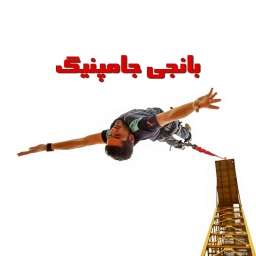## Where Did Bungee Jumping Come from?
Bungee jumping is an activity that involves jumping from a tall structure while attached to an elastic cord. The cord is designed to stretch and recoil, allowing the jumper to bounce back up after the initial fall. Bungee jumping is a popular tourist activity and is often used as a way to raise money for charity.
### The Origins of Bungee Jumping
The origins of bungee jumping can be traced back to the 19th century, when British colonists in Vanuatu witnessed a ritual performed by the native people. The ritual involved jumping from a high platform with vines tied around their ankles. The colonists were so impressed by the ritual that they began performing it themselves, and the activity soon spread to other parts of the world.
### The First Commercial Bungee Jump
The first commercial bungee jump was organized by A.J. Hackett in 1986. Hackett jumped from the Royal Gorge Bridge in Colorado, and the event was widely publicized. The jump was a huge success, and it soon led to the opening of bungee jumping sites all over the world.
### The Science of Bungee Jumping
Bungee jumping is a complex activity that requires careful planning and execution. The following are some of the key scientific principles that are involved in bungee jumping:
* **Elasticity:** The elastic cord used in bungee jumping is designed to stretch and recoil. The amount of stretch depends on the length of the cord, the weight of the jumper, and the height of the jump.
* **Gravity:** Gravity is the force that pulls the jumper down towards the ground. The greater the height of the jump, the greater the force of gravity.
* **Momentum:** Momentum is the product of the jumper’s mass and velocity. As the jumper falls, their momentum increases. When the cord reaches its maximum stretch, the jumper’s momentum causes them to bounce back up.
* **Air resistance:** Air resistance is the force that opposes the jumper’s movement through the air. The greater the velocity of the jumper, the greater the air resistance.
### The Safety of Bungee Jumping
Bungee jumping is a safe activity when it is properly regulated. The following are some of the key safety measures that are used to ensure the safety of bungee jumpers:
* **Equipment:** Bungee jumping equipment is subject to rigorous safety inspections. The cords are made from high-quality materials and are designed to withstand the forces involved in bungee jumping.
* **Training:** Bungee jumping operators must be trained and certified. They are responsible for ensuring that jumpers are properly equipped and that the jump site is safe.
* **Medical supervision:** Medical personnel are on hand at all bungee jumping sites to provide first aid and emergency medical care.
### The Future of Bungee Jumping
Bungee jumping is a popular activity that is enjoyed by people all over the world. The future of bungee jumping is bright, and the activity is likely to continue to grow in popularity in the years to come.
### Bungee Jumping World Records
The following are some of the world records for bungee jumping:
* **Highest bungee jump:** 764 feet (233 meters) – Royal Gorge Bridge, Colorado, USA
* **Longest bungee jump:** 1,981 feet (604 meters) – Verzasca Dam, Switzerland
* **Most bungee jumps in 24 hours:** 311 – Benji Webbe, Italy
* **Oldest person to bungee jump:** 101 years old – Dorothy Custer, USA
### Bungee Jumping FAQ
The following are some frequently asked questions about bungee jumping:
* **Is bungee jumping safe?** Yes, bungee jumping is a safe activity when it is properly regulated.
* **How old do you have to be to bungee jump?** The minimum age to bungee jump varies depending on the operator. Most operators require jumpers to be at least 18 years old.
* **How much does it cost to bungee jump?** The cost of a bungee jump varies depending on the operator and the location. Typically, a bungee jump will cost between $50 and $200.
* **What are the risks of bungee jumping?** The risks of bungee jumping include:
* **Equipment failure:** The bungee cord or other equipment could fail, resulting in serious injury or death.
* **Human error:** The operator could make a mistake, resulting in serious injury or death.
* **Jumper error:** The jumper could do something wrong, such as not following the operator’s instructions, resulting in serious injury or death.
* **Natural hazards:** The jump site could be affected by natural hazards, such as high winds or lightning, resulting in serious injury or death.
* **How do I prepare for a bungee jump?** The following are some tips for preparing for a bungee jump:
* **Choose a reputable operator:** Do your research and choose a bungee jumping operator that has a good safety record.
* **Train for the jump:** Bungee jumping is a physical activity. Make sure you are in good physical condition before you jump.
* **Follow the operator’s instructions:** The operator will give you instructions on how to prepare for the jump. Follow the instructions carefully to ensure your safety.
* **What should I wear for a bungee jump?** The following are some tips for what to wear for a bungee jump:
* **Wear comfortable clothing:** You will be wearing a harness, so make sure you wear clothing that is comfortable and easy to move around in.
* **Wear closed-toe shoes:** You will be jumping from a high height, so make sure you wear closed-toe shoes to protect your feet.
* **Avoid loose clothing:** Loose clothing could get caught in the harness or the cord. Avoid wearing loose clothing to ensure your safety.
